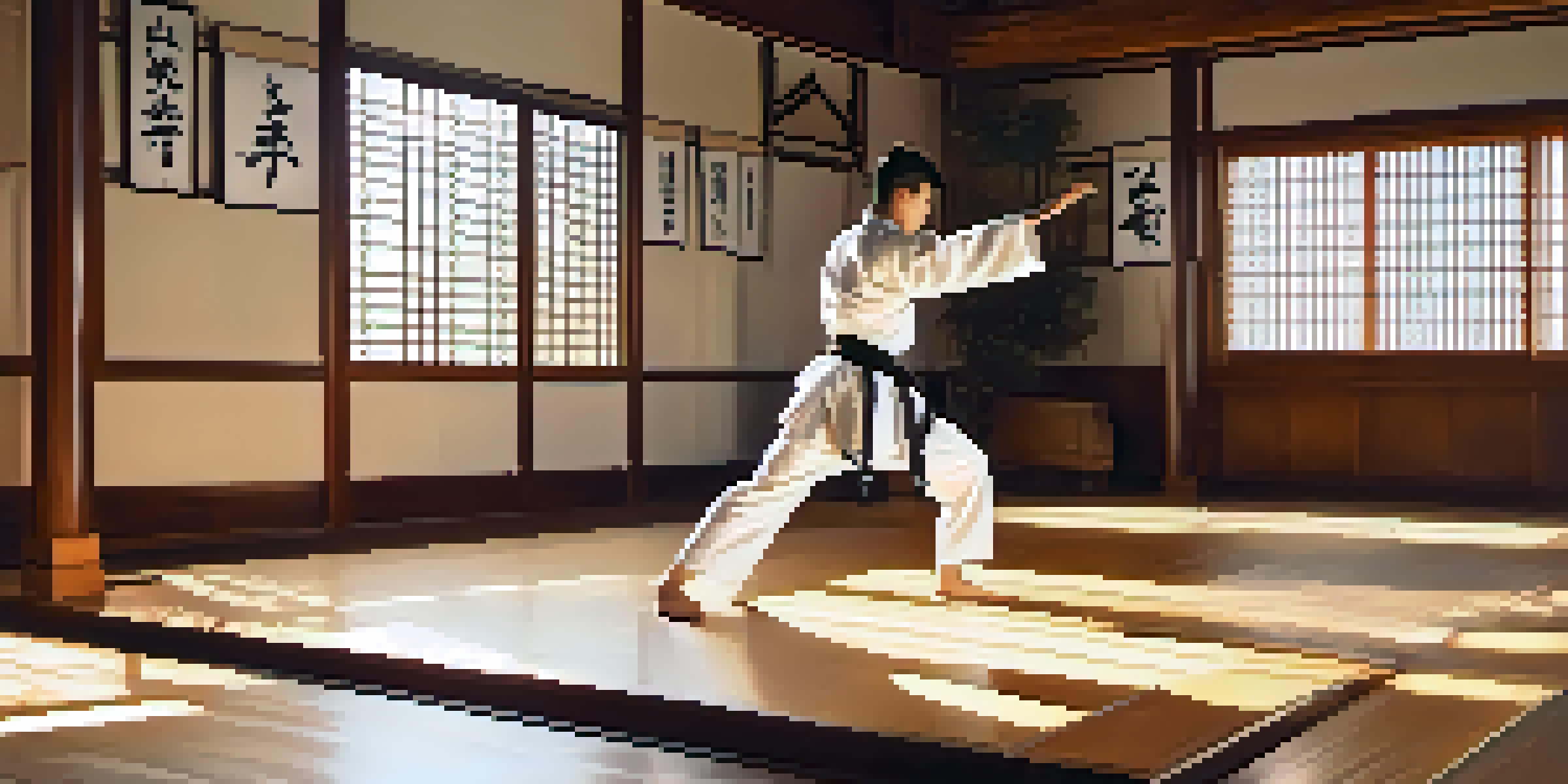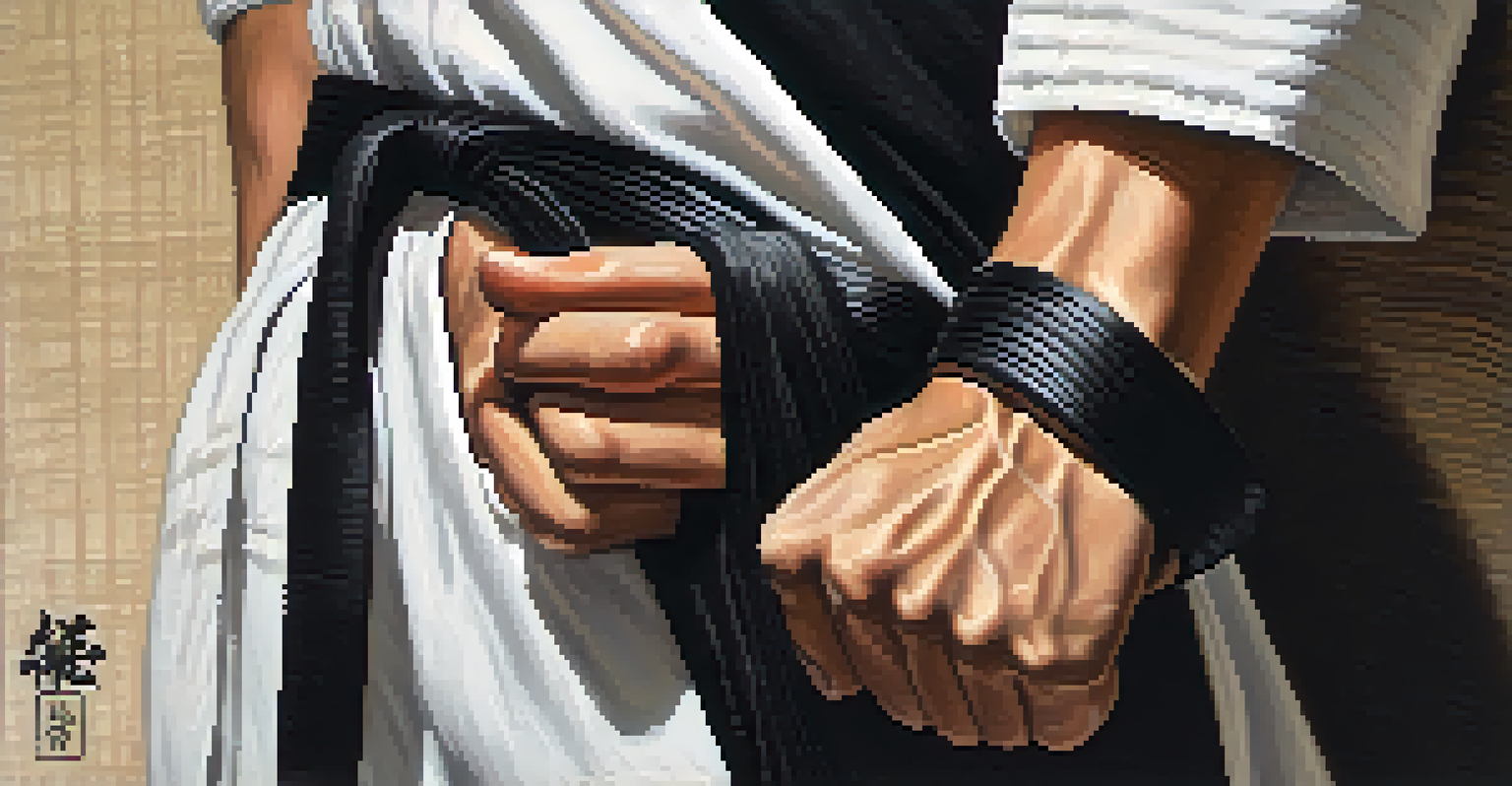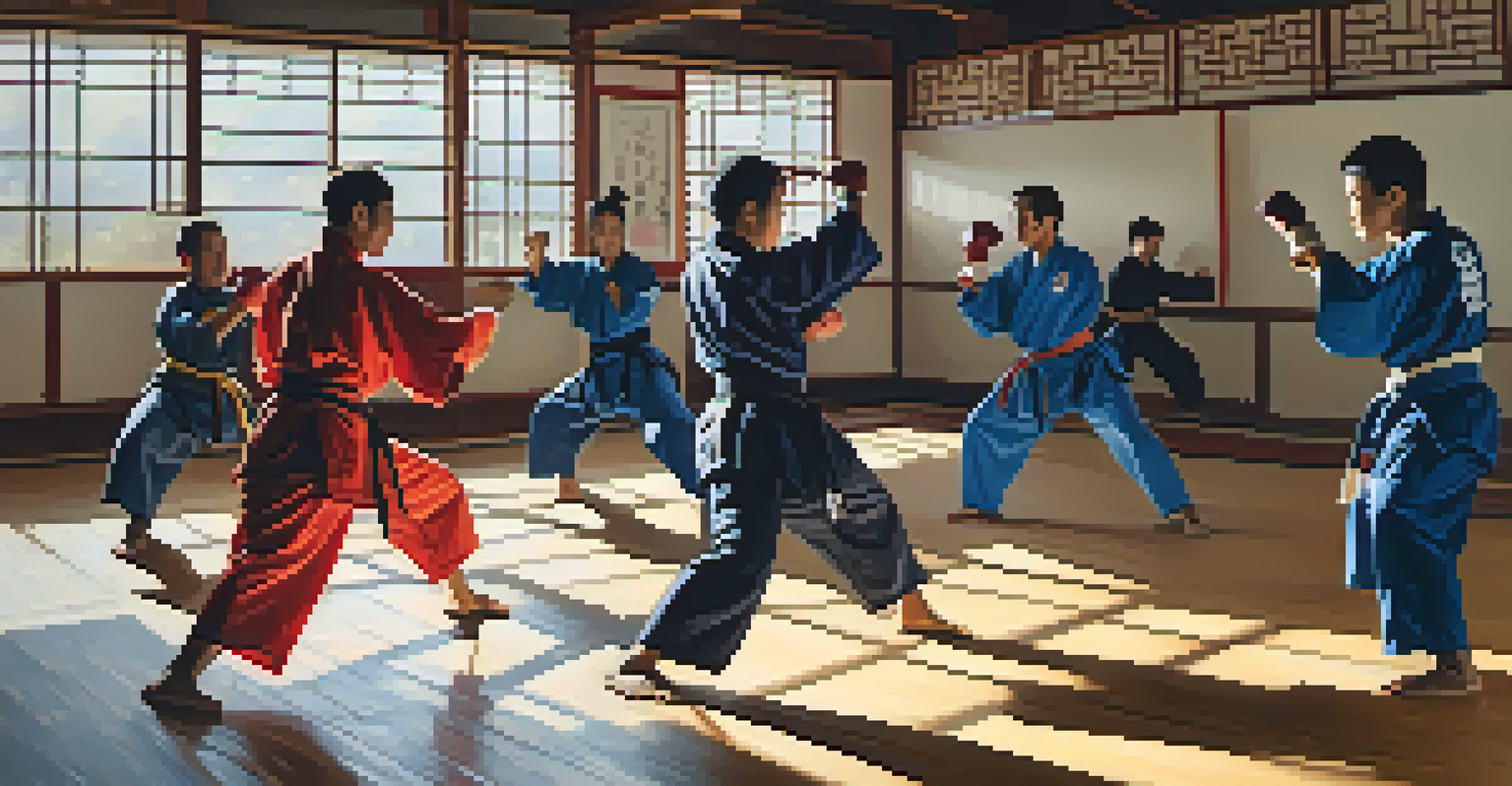Goal Setting in Martial Arts: A Leadership Development Tool

Understanding the Importance of Goal Setting
Goal setting is a fundamental aspect of martial arts training that transcends the dojo. It serves as a roadmap, guiding practitioners toward personal growth and mastery of their craft. By establishing clear, tangible objectives, martial artists can measure progress and stay motivated throughout their journey.
Setting goals is the first step in turning the invisible into the visible.
In martial arts, goals can range from mastering a specific technique to achieving a certain belt rank. This structured approach not only helps in skill development but also instills a sense of discipline and commitment. Think of it as planting seeds; with care and dedication, you nurture them into something fruitful.
Moreover, these goals often require breaking larger ambitions into smaller, manageable tasks. This step-by-step process mirrors effective leadership strategies, emphasizing that great leaders aren’t born overnight—they grow through consistent effort and learning.
Setting SMART Goals in Martial Arts
To enhance effectiveness, goals should be SMART: Specific, Measurable, Achievable, Relevant, and Time-bound. For instance, instead of vaguely stating 'I want to be better at sparring,' a SMART goal would be 'I will practice sparring drills twice a week for the next month.' This clarity helps martial artists focus their efforts.

Using the SMART framework not only sharpens focus but also boosts confidence as each milestone is achieved. Celebrating these small victories reinforces the belief that progress is possible. It's akin to climbing a mountain; each step taken brings you closer to the summit, no matter how daunting it may seem.
Goal Setting Fuels Martial Arts Growth
Establishing clear, structured goals helps martial artists measure progress and stay motivated on their journey.
Additionally, by regularly reviewing these goals, martial artists can adjust them as needed, fostering a growth mindset. This flexibility is vital for leaders, who often must adapt their strategies based on changing circumstances.
The Role of Accountability in Achieving Goals
Accountability plays a crucial role in goal setting, whether in martial arts or leadership. Sharing your goals with a coach or training partner creates a support system that keeps you on track. This social commitment adds a layer of motivation that self-imposed goals often lack.
Success is not final, failure is not fatal: It is the courage to continue that counts.
In martial arts, accountability can manifest through sparring sessions or group training, where peers encourage each other to push beyond their limits. This camaraderie not only builds trust but also fosters a sense of belonging, which is essential for effective leadership.
Moreover, being accountable means facing challenges head-on rather than avoiding them. Leaders, much like martial artists, learn to embrace failure as a stepping stone toward success, reinforcing resilience and determination.
Overcoming Obstacles in Goal Achievement
Every martial artist faces obstacles, be it physical limitations or mental barriers. Understanding that setbacks are part of the journey is crucial for both practitioners and leaders. Instead of viewing these challenges as failures, they should be seen as opportunities for growth and learning.
For example, if a martial artist struggles with a particular technique, it’s a chance to seek help, adjust their training, or even explore different strategies. This proactive approach builds problem-solving skills, a key trait in effective leaders who must navigate complex situations.
SMART Goals Enhance Focus
Using the SMART framework allows martial artists to create specific, achievable objectives that build confidence through small victories.
Furthermore, embracing adversity helps cultivate a positive mindset. Just as martial artists learn to adapt their techniques in response to an opponent's moves, leaders must develop agility in their thinking and approach to challenges.
The Connection Between Discipline and Leadership
Discipline is a cornerstone of both martial arts and leadership. In martial arts, regular training and adherence to routines foster self-control and perseverance. These traits are equally essential for leaders who must maintain focus and consistency in their decision-making.
Practicing discipline in martial arts translates to everyday life, reinforcing the idea that commitment and hard work yield results. For instance, a leader who consistently demonstrates discipline inspires their team to follow suit, creating a culture of accountability and excellence.
Moreover, disciplined individuals are better equipped to handle stress and uncertainty. Just as a martial artist remains calm under pressure during a sparring match, effective leaders manage crises with poise, paving the way for successful outcomes.
Building Confidence Through Goal Achievement
Achieving goals in martial arts boosts confidence, empowering practitioners to tackle new challenges. Each milestone reached, whether it's mastering a kick or earning a new belt, serves as a reminder of what’s possible with dedication. This newfound self-assurance can translate into various aspects of life, including leadership roles.
In leadership, confidence is crucial; it influences how others perceive and respond to you. A confident leader inspires trust and motivates their team, much like a skilled martial artist commands respect in the dojo. It’s all about projecting belief in oneself and one’s abilities.
Accountability Drives Success
Sharing goals with peers fosters a support system that enhances motivation and helps overcome challenges in martial arts and leadership.
Moreover, the journey of setting and achieving goals helps build resilience. Just as martial artists learn to get back up after a fall, leaders must cultivate the ability to bounce back from setbacks, reinforcing their confidence and capability.
Translating Martial Arts Goals to Leadership Skills
The skills developed through goal setting in martial arts seamlessly transfer to leadership contexts. For instance, the dedication required to achieve a black belt mirrors the commitment needed to lead a successful team. Both paths demand vision, discipline, and the ability to inspire others.
Setting and achieving goals in martial arts teaches valuable lessons in strategic planning. Leaders who can break down large objectives into actionable steps are more likely to navigate complexities effectively, ensuring their team stays aligned and focused.

Ultimately, the journey of a martial artist is not just about physical prowess; it’s about developing a mindset that embraces growth, resilience, and leadership. By applying these principles in professional settings, martial artists can become influential leaders who drive positive change.